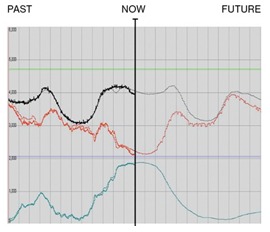Big data & AI: ultra-accurate forecasts
The National Center for Atmospheric Research (NCAR) is popularizing wind energy in the United States. Artificial Intelligence (AI) Software processes data efficiently, obtaining unprecedented forecasts, which help energy companies deal with one of the biggest challenges of wind power: intermittency. Using small amounts of wind power is no problem for utilities. They are accustomed to dealing with uncertainty.
The demand of electricity is changing constantly, and utilities need backup power to protect against a sudden loss of wind. These backup plants, which typically burn fossil fuels, are quite expensive and dirty. With more accurate forecasts, utilities can cut the amount of power that needs to be held in reserve, minimizing their role.
Xcel Energy, one of the biggest electric companies in the United States, was against the implementation of renewable energies, because this will increase its electricity costs.
Thanks in large part to the forecast improvement, Xcel has now changed completely. It has installed more energy than every other electric company in the USA and supports the decision that companies must obtain 30% of their energy from renewable sources.
In 2009 a new version of the prediction system of NCAR was released. In 2013 it improved significantly, and the previsions made Xcel save the same quantity of money in one year than the last three all together. Now NCAR is working on a similar prediction system for Solar Energy.
The higher accuracy of forecasts allows for Xcel to secure enough wind power to turn off the majority of the energy supply plants. The number of plants depend on the certainty of the prediction.
The NCAR takes information from all the wind turbines. Data is then sent to a high resolution meteorological model and it is combined with the results of five additional wind predictions. Through historic data, NCAR software learns which previsions are better for each park and in consequence assigns different weight to each one. This results in a super-forecast that is more accurate than any of the originals.
The next graph explains how much energy Xcel has to produce with fossil plants (red line), and is the result of combining the wind energy supply (blue line) and the energy demand (black line). The lighter lines are forecasts:
As shown, the improvement of wind predictions allows Xcel to maximize its production and minimize the use of fossil fuels, adapting efficiently to the energy demand.
The future is now looking at ways to couple forecasts with smart dishwashers, water heaters, solar-panel inverters, water treatment plants, and electric-car chargers, not only to accommodate shifts in the wind but to ride out inevitable windless periods and weeks of cloudy weather without resorting to fossil fuels.






.png)
].gif)
.png)
].png)
].png)
].png)
.png)
].png)
.png)
